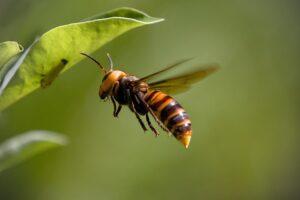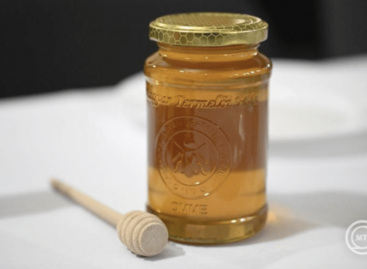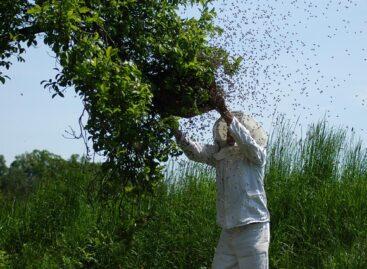The National Hungarian Beekeeping Association warns of the dangers of the Asian horse hornet
The National Hungarian Beekeeping Association (OMME) has drawn the attention of the public to the appearance of the Asian horse hornet (Vespa velutina) in Hungary – agrokult.hu wrote, based on the association’s statement.

(Photo: Pixabay)
They highlighted that this invasive species, with its rapid spread in many European countries, poses a serious threat to the native pollinators of the given area, including honey bees kept by beekeepers. The Asian horse hornet was first detected in Hungary on August 22, 2023, in Kimlé, Győr-Moson-Sopron County. The animals’ nest was discovered and destroyed by OMME on October 5, 2023, with the help of foreign experts. The association has not been aware of any new appearance in Hungary since then, but the Asian horse hornet has appeared several times in Slovakia, close to the Hungarian border. According to experts, it is highly likely that it will reappear in Hungary in 2025.
The Asian horse hornet is smaller than the native European horse hornet, about 2.5-3 centimeters long
It is dark in color, the end of its abdomen is yellowish-orange, and the lower part of its legs is characteristically yellow. It can build its nest outdoors, usually on tall trees or bushes, but also at ground level. The nest opening is located at the bottom, while the nest of the native European horse hornet has its entrance on the side. The Asian horse hornet actively hunts domestic bees, and a single colony can destroy tens of thousands of bees. Due to its rapid spread, it threatens the balance of the local ecosystem – they wrote. The association asks that if anyone sees an Asian horse hornet or its nest, they take a photo of the insect or the nest and send it – indicating the exact location of the sighting – to the official OMME e-mail address: velutina@omme.hu. OMME has also prepared an information leaflet that introduces the Asian horse hornet, the dangers of its spread, and compares it to the native horse hornet. The leaflet is available on the OMME website. Further information can be found on the OMME website at the link www.omme.hu/azsiai-lodarazs/ – writes agrokult.hu based on the association’s announcement.
MTI
Related news
OMME consultant: the honey market started to move this year after three years
🎧 Hallgasd a cikket: Lejátszás Szünet Folytatás Leállítás Nyelv: Auto…
Read more >The goal of the Honey Breakfast is to encourage honey consumption
🎧 Hallgasd a cikket: Lejátszás Szünet Folytatás Leállítás Nyelv: Auto…
Read more >OMME: Contact a specialist if you spot a swarm of bees
🎧 Hallgasd a cikket: Lejátszás Szünet Folytatás Leállítás Nyelv: Auto…
Read more >Related news
THE LATEST ISSUE OF TRADE MAGAZINE HAS BEEN PUBLISHED!
🎧 Hallgasd a cikket: Lejátszás Szünet Folytatás Leállítás Nyelv: Auto…
Read more >Agroinform.hu: Three-quarters of fir tree buyers can decorate their homes with products from domestic producers again this year
🎧 Hallgasd a cikket: Lejátszás Szünet Folytatás Leállítás Nyelv: Auto…
Read more >István Nagy: the total output value and profitability of agriculture have also increased
🎧 Hallgasd a cikket: Lejátszás Szünet Folytatás Leállítás Nyelv: Auto…
Read more >






